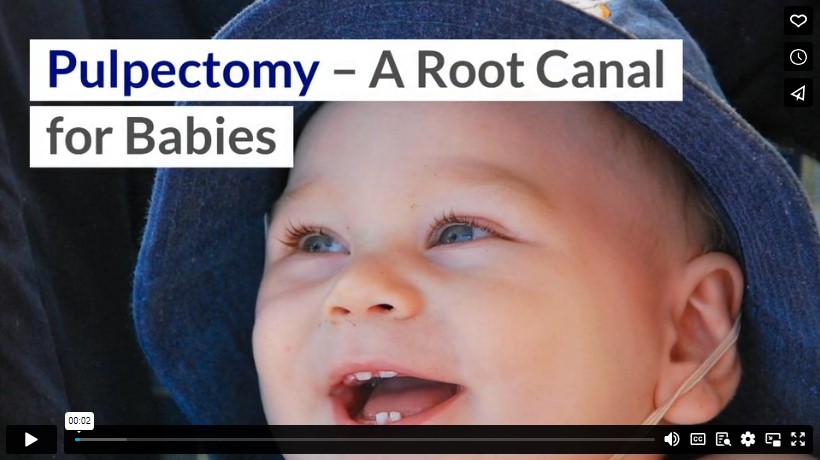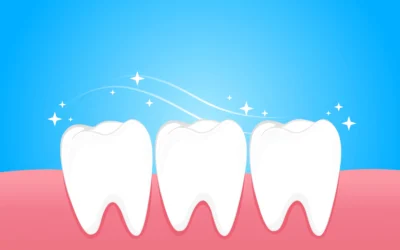Don’t get too excited. A pulpectomy is not a root canal for grown-up babies, it is a root canal for actual babies. . or children. . or teens. . . anyone that still has baby teeth. Sometimes, due to damage or cavities, the inside of a baby tooth gets so infected that it needs to be saved from the inside out. In a permanent tooth, this would be called a root canal and include a few more steps. For primary teeth, the dentist will perform a pulpectomy.
Why is it Necessary?
While our teeth are hard to the touch, it has a sort of “pulp” inside, the living tissue within the shell of the tooth. If the pulp gets too infected or inflamed, it can cause serious damage to the tooth. Sometimes the pulp rots because of decay due to poor dental habits. But, it can also be caused by trauma or injury.
If the pulp of the tooth is rotten, dead, or infected it needs to get cleaned out to save the tooth.
What Happens?
A pulpectomy, unlike a root canal, can be done in one visit, and in most urgent dental care centers. An X-ray is performed to identify the tooth and the infected pulp. Then, anesthesia is administered to numb the tooth and gums. The dentist will drill a small hole in the surface of the tooth and then the infected pulp is scraped out of the tooth. The tooth is then filled in with a substance that will be naturally absorbed by the body. With a root canal, there would be a follow-up appointment for a permanent cap on the tooth, but that generally isn’t needed in a pulpectomy.
Why Not Just Pull the Tooth?
If the pulp of the tooth is that damaged, you might wonder why the dentist doesn’t just pull the whole thing, especially since it is “just” a baby tooth. Good question. But there is more to those baby teeth than meets the eye.
Teeth play a big role in forming words. If there are gaps that aren’t designed to be there, it can affect a young child’s speech patterns. Also, the jaw bone can be compromised when there is just a space. Pulling a primary tooth too early means the adult tooth isn’t on deck to fill the gap. This can affect the jawbone and cause other teeth to shift. Those shifts might cause problems down the road.
What to do After a Pulpectomy
Since it is a fairly simple procedure, the recovery time is not too long. There might be some soreness. Over-the-counter painkillers can be used. Ice can also help with any pain or swelling. If the infection was severe, your dentist might prescribe an antibiotic to avoid any further infection. Avoid eating until the numbness has completely worn off so you don’t accidentally chew up your tongue or cheek.
How Can We Avoid It?
The best kind of pulpectomy is no pulpectomy at all. The dentist would much rather see you for a cleaning and a free toothbrush. Infections and decay can best be avoided by good old-fashioned dental care.
● Brush – Investing in a good toothbrush is a great first step. Electric toothbrushes can be even more effective for children who sometimes struggle to be thorough (and focused!) while they brush their teeth. They also have built-in timers to make sure those chompers are getting scrubbed long enough. There are electric toothbrushes that connect to apps to track the brushing pattern, play fun music, and track the habit. Keep it positive.
● Floss – Flossing will help avoid decay as well. Food can get trapped in all those nooks and crannies, and food rots. As it rots, it can take the teeth with it. Flossing can take care of those trouble spots. Add a good fluoride mouthwash after that, and you are heading in the right direction.
● Eat Healthy – Nutrition is an important part of dental health as well. Raw fruits and vegetables aren’t just good for the body, they exercise the teeth and strengthen enamel. Getting kids on board with healthy snacks doesn’t just lower dental bills, it will bless them throughout their lives.
● Play Safe – If your child is active, consider using a mouthguard for contact sports. Sometimes damage to the pulp has nothing to do with cavities, it comes from a cracked tooth. Getting your child used to mouthguards when they are very small will go a long way in helping them be comfortable as they continue to grow and play. Once their permanent teeth come in, you’ll want to protect them with a mouthguard. That can be a hard habit to start later in life.
As much fun as pulpectomies might sound, kids probably won’t be asking for one from Santa Clause. Help your child develop healthy habits with their mouth and not only will that help them avoid the procedure with their baby teeth, but it will go a long way to avoid the more extreme (and expensive) root canals in the future.
Video




